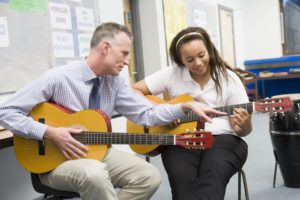An Introduction Of Music Lessons
 While a simple song may not seem like a difficult assignment, there are plenty of ways to stretch your student’s abilities. For instance, you could use a clapping exercise to teach them about different musical scales and patterns. Students could also try playing different instruments or using the walls, floor, or chairs in the room to add sound.
While a simple song may not seem like a difficult assignment, there are plenty of ways to stretch your student’s abilities. For instance, you could use a clapping exercise to teach them about different musical scales and patterns. Students could also try playing different instruments or using the walls, floor, or chairs in the room to add sound.
A well-planned music lesson can incorporate many different musical activities and skills. Students learn through play, ear training, and conceptual understanding. Students can begin by figuring out a song by ear, rearranging it on a barred instrument, or writing it in graphic notation. You could even incorporate the use of visuals in a lesson to reinforce the concept. If you wish to learn more about this, visit Music Matters – Guitar Lessons Trinity Florida
A lesson will also teach you proper posture for playing an instrument. This is critical for achieving the best results, and avoiding injuries to the muscles and skeletal frame. Additionally, a teacher will show students how to finger the piano, a skill that is learned slowly as students advance. If your child has an instrument, make sure that it is in good condition and not falling apart or being damaged. Maintaining it will avoid having to buy a new instrument later.
While it is important to engage children in music lessons, it is also important to provide them with an environment that is conducive to learning. This is where parents can serve as guides. Parents can help their children immerse themselves in the world of music by setting up displays of books on the subject. They can also sing with their child or play an instrument to stimulate their interest.
Moreover, music lessons also provide students with a valuable opportunity to learn about other aspects of music. A great teacher can have their students playing an instrument by the first lesson. A great music teacher will make it possible for a student to learn at least three notes, which is all they really need to learn. Taking an instrument lesson will provide them with a sense of accomplishment.
Besides learning the fundamentals of music, students should learn about rhythmic techniques, underlying music theory, and phrasing and dynamics. A good teacher will stress these points while teaching students how to create a pleasing tone. The teacher should also use magical methods to keep the instruments quiet. The last thing they need is a teacher who talks over them.
A good music lesson should also encourage students to stretch themselves. Some teachers encourage students to stretch their comfort zones by introducing them to a new genre of music. They may even offer a lesson plan that encourages students to develop a personal definition of music, a reading or writing activity, or an exciting water drum exercise.
Music lessons are generally one-on-one with an instructor, but they can also be in groups. A lesson will usually last for thirty or 60 minutes. Depending on the student’s skill level, lessons are either hands-on or online. The teacher will customize a lesson plan based on the goals and abilities of the student.